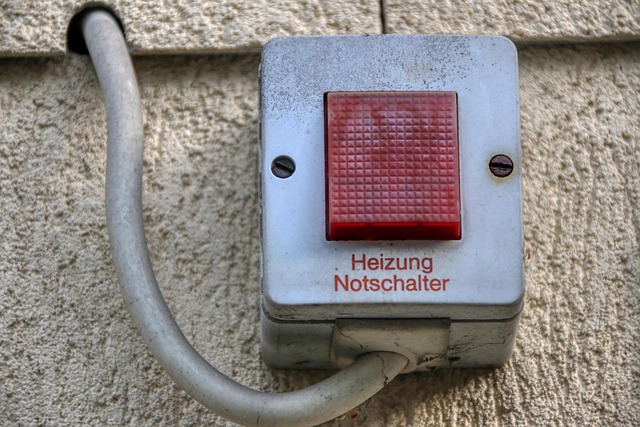Perform a meticulous capacity evaluation to select and install heaters safely and efficiently. Assess space dimensions, airflow, electrical/fuel needs, insulation, flooring compatibility, and climate conditions. This ensures proper heater size and placement for optimal heating without risks or disruptions.
Before installing a heater, carefully evaluate key factors for a successful and safe integration. Assess the available space and accessibility for seamless installation. Determine the heater’s power and voltage requirements to ensure compatibility with your existing infrastructure. Calculate heating needs based on area to select an appropriate capacity evaluation. Check floor and surface compatibility to prevent damage or instability. Verify ventilation and airflow conditions for optimal performance. Consider fuel source and supply logistics for efficient operation.
- Assess Space and Accessibility for Installation
- Determine Heater's Power and Voltage Requirements
- Calculate Heating Needs Based on Area
- Check Floor and Surface Compatibility
- Verify Ventilation and Airflow Conditions
- Consider Fuel Source and Supply Logistics
Assess Space and Accessibility for Installation

When evaluating the installation requirements of a heater, assessing space and accessibility is paramount. Before committing to a purchase, carefully consider the physical dimensions of the heater in relation to your available floor space. Heaters vary greatly in size, from compact models suitable for small rooms to large units designed for expansive spaces. Ensuring there’s enough clearance around the heater for proper airflow and maintenance access is crucial for optimal performance and safety.
Additionally, think about the accessibility of electrical outlets and gas lines (if applicable). The location of these utilities can significantly impact installation feasibility. Proper spacing between the heater and other furniture or obstacles is essential to guarantee safe operation and easy maintenance. A thorough capacity evaluation should also consider the climate and size of the area you intend to heat, ensuring that the chosen heater has the necessary output to meet your heating needs effectively.
Determine Heater's Power and Voltage Requirements

When evaluating the installation requirements of a heater, determining its power and voltage needs is a crucial step. The capacity evaluation should consider both the heater’s thermal output (measured in BTUs or Watts) and the electrical input it demands. Heaters with higher BTU ratings generally require more power, often specified in volts (V). For instance, a 5000 BTU heater might need approximately 120V to 240V depending on its design and efficiency. Understanding these specifications ensures your electrical system can handle the load without overstraining.
This process involves consulting the heater’s user manual or manufacturer guidelines, which typically provide detailed power requirements. It’s important to match these with your existing or planned electrical setup to avoid potential hazards like circuit overload or even fire risks. Moreover, consider peak usage times and available power sources to guarantee a safe and efficient heating system installation.
Calculate Heating Needs Based on Area

To accurately calculate your heating needs and determine the appropriate heater capacity, assessing the area is a critical first step. The size of a space significantly influences the amount of heat required to maintain a comfortable temperature. When evaluating installation requirements, consider factors like the square footage of the room or area to be heated, insulation properties, and potential heat losses through windows or exterior walls. A thorough assessment ensures that the chosen heater has sufficient capacity to effectively warm the designated space.
For example, a larger room with poor insulation will require more heating power than a smaller, well-insulated one. Therefore, a precise area measurement and analysis of thermal dynamics are essential for a successful capacity evaluation. This process allows you to select a heater that meets your specific demands, ensuring energy efficiency and optimal performance.
Check Floor and Surface Compatibility

Before installing any heater, it’s crucial to assess floor and surface compatibility as part of your capacity evaluation. Different heaters have specific requirements regarding the type of flooring they can safely operate on. For instance, electric heaters may not be suitable for carpeted areas due to potential electrical hazards and heat dissipation concerns. On the other hand, portable heaters designed for indoor use often come with adjustable settings to accommodate various floor surfaces, from tile and hardwood to concrete.
During your assessment, consider factors like flooring material, thickness, and overall condition. Ensure that the heater’s base has a stable and level contact with the surface to prevent accidents or damage. Some heaters might require specific types of anchors or pads for secure installation, especially in high-traffic areas where stability is paramount. A thorough check ensures not only optimal performance but also safety for occupants and prevents potential floor damage from heat buildup.
Verify Ventilation and Airflow Conditions

Before installing a heater, it’s crucial to verify ventilation and airflow conditions as part of a comprehensive capacity evaluation. Adequate ventilation is essential for both energy efficiency and safety. Check that the area has sufficient air intake and exhaust points; obstructed or inadequate airflow can lead to poor heating performance and potential safety hazards.
Consider the size and type of heater you intend to install. Different heaters have varying ventilation requirements. Ensure the chosen heater’s specifications align with the available space, taking into account air flow patterns and any potential obstacles like furniture or architectural features that could disrupt optimal airflow. This step is vital for ensuring your heater functions at peak capacity while maintaining a safe environment.
Consider Fuel Source and Supply Logistics

When evaluating the installation requirements of a heater, it’s crucial to consider the fuel source and supply logistics. The choice of fuel—whether it’s electricity, natural gas, propane, or fuel oil—will significantly impact both the initial installation cost and ongoing operational expenses. For instance, while electric heaters are generally easier to install and maintain, they may require significant electrical upgrades and could have higher energy costs, especially for units with large capacities. On the other hand, fuel-based heaters might involve complex piping systems and storage tanks, necessitating careful planning and coordination to ensure a steady supply.
In terms of capacity evaluation, understanding your space’s heating needs is paramount. Heaters come in various sizes designed for different applications—from small, portable units suitable for single rooms to large, central heating systems capable of warming entire homes or commercial spaces. Assessing the square footage, insulation, and climate conditions of the area to be heated will help determine the appropriate capacity. Proper fuel supply logistics, including access to fuel lines, storage, and delivery schedules, are equally important to ensure uninterrupted service and avoid unexpected disruptions or shortages.






